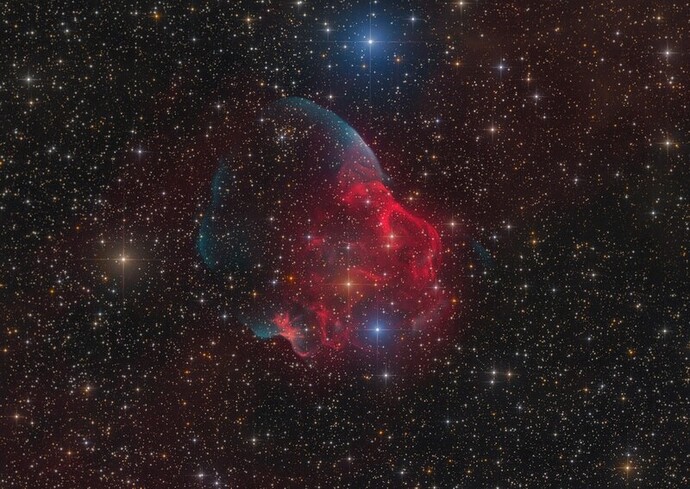Hello all together!
Last winter a newly discovered object in Monoceros was on the exposure program in 16 nights between December and March. This time also with “smaller” technical difficulties like a defective filter wheel, which required a trip to the observatory and exchange of the camera.
In the end I sent the sum images to Marcel, who processed them to one image. Voyager with DragScript always did a perfect job.
Strottner-Drechsler Object 4 / SNR G210.5+1.3 is a spectrum-confirmed, previously unknown supernova remnant in the constellation Monoceros, discovered by Marcel Drechsler and Xavier Strottner in August 2019. With a diameter of 25 arcminutes, SNR G210.5+1.3 is one of the smaller supernova remnants, suggesting a relatively large distance. Since no central star in the form of a neutron star or pulsar could be found so far, it was not possible to determine the exact distance of SNR G210.5+1.3. Examination of the spectra showed strong [SII] emission compared to H-alpha ([SII] images would therefore not have been bad) with some evidence of [O I] emission. H-beta is conspicuous by its absence, being absorbed or strongly scattered by something in the foreground. Presumably due to dust - the SNR must therefore be behind it and thus it can be concluded that the object must be quite distant. G210.5+1.3 could also be quite old, as there is only faint [O III] emission. What is special and surprising about this supernova remnant is the amazingly precise separation between H-alpha (red) and [OIII] (blue), which seems to break out of the main structure like a bubble.
45 h StDr object 4 with 10" Newtonian @ f = 1000 mm
All the best,
Markus, Marcel and Xavier
